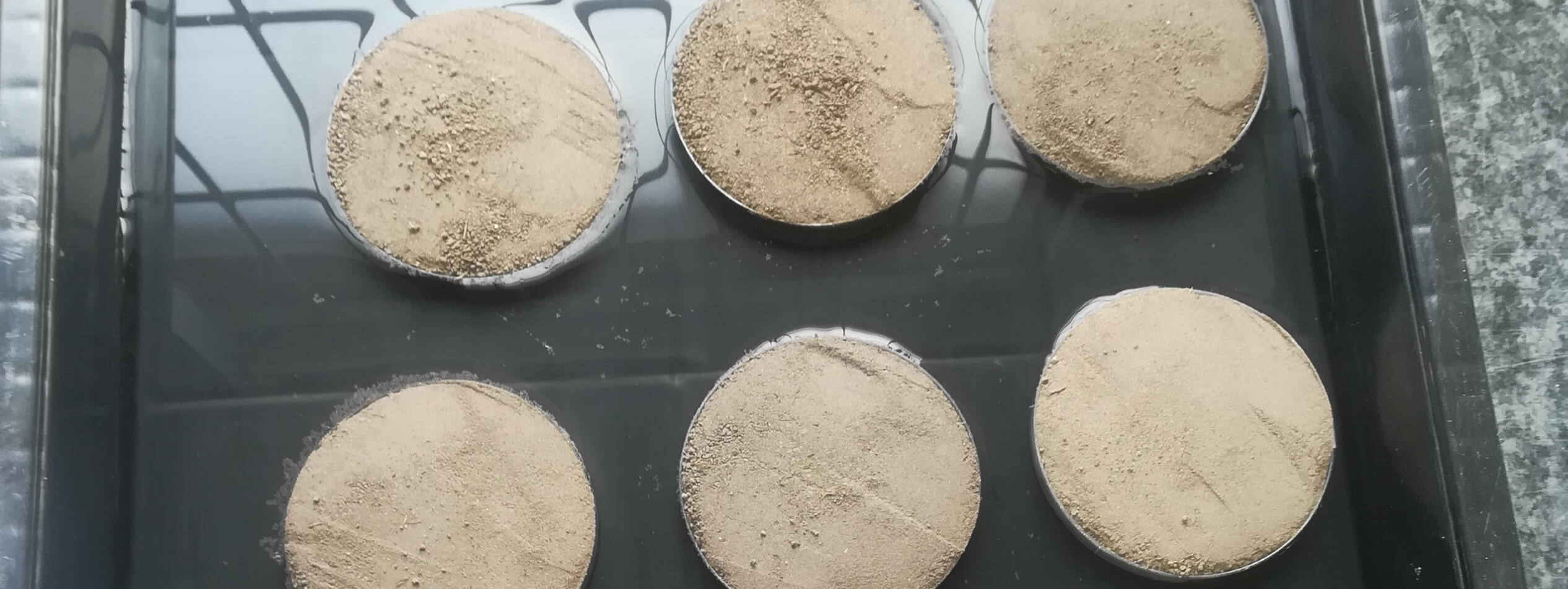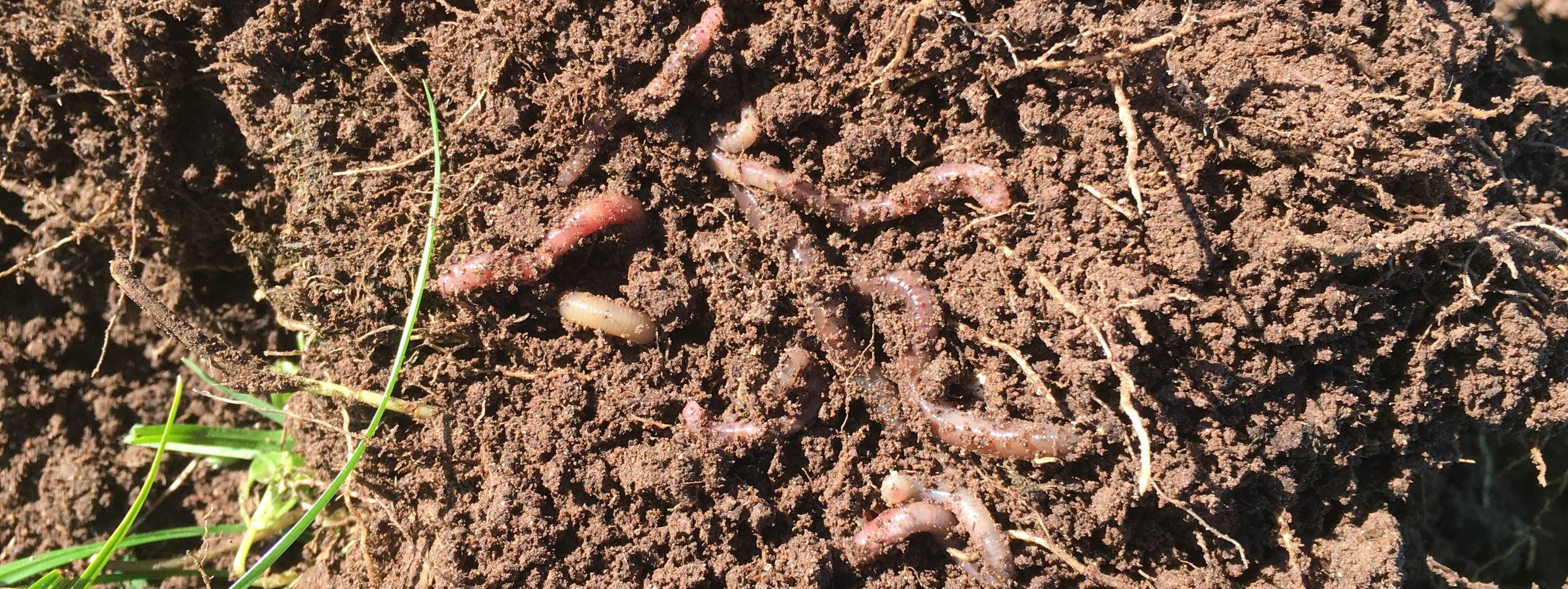Hydrophobic soils
I find it funny that there is a type of soil that is termed hydrophobic. I associate that phobia term with fearing something. Hydrophobic soils don’t really fear anything, they are just not able to absorb water properly. They are also referred to as water-repellent or non-wetting soils.
Hydrophobic soils are the result of a waxy organic compound which forms around soil particles. This substance coats the particles, resulting in water repellency.
How and why do hydrophobic soils form, and how can you detect a hydrophobic soil?
The biggest problem with hydrophobic soils is that it results in uneven soil water infiltration. Hydrophobic soils can have large dry patches/pockets within the soil, even after rain or irrigation. Uneven pasture growth is the result.
There are other factors which can cause uneven pasture growth though. The best way to test whether a soil is hydrophobic is to immerse it in water and assess whether there is any infiltration of water. Hydrophobic soils, as in the image above, will not become wet even when immersed in water.
There are many articles written about hydrophobic soils in other parts of the world. I haven’t really come across anything written from the South African perspective though. Especially in terms of pasture soils. This means that when we came across hydrophobic pasture soils in South Africa there was not much available insight on how to manage them.
Overcoming the challenge in pasture soils
The following are a few practices that farmers with permanent pastures can implement to reduce the negative impact of hydrophobic soils:
Build carbon in the soil
Hydrophobic soils are predominantly sandy soils, and therefore there is nothing else to hold water, but carbon. Due to the waxy layer around the soil particles, water is not held at all by the soil. By building carbon in the soil, there become something to which water can attach. This results in a hydrophobic soil still being able to hold water, and the more carbon there is the more water it can hold.
Facilitate soil life
The life in the soil is important to so many soil processes. A thriving soil life contributes to productivity in numerous ways. With regards to hydrophobic soils, certain soil microbes have been shown to breakdown the waxy layer on the surface of sand particles1.
Practices which facilitate a healthy soil life should be prioritised. An important aspect of this is liming acidic soils. Low pH soils are not conducive to the microbes which degrade the waxy compound causing water repellency1. Soil organisms also create bio-pores, which provide pathways for water to move through the soil2.
Organic material on the surface of the soil
Organic material on the surface of the soil slows down run-off from rainfall and irrigation. The water is therefore able to slowly infiltrate via pathways created by roots and soil organisms. Animal manure, compost and mulch are all examples of sources of organic material on the surface of the soil.
Deal with soil compaction
Compaction is a problem in sandy soils. Hydrophobic soils plus compaction is a recipe for minimal water infiltration and maximum run-off. Compaction needs to be dealt with in any soil but is especially important to address in hydrophobic soils.
Roots are key
Firstly, roots in the soil help to build carbon. Secondly, roots create pathways (bio-pores) for water to infiltrate2. By having diverse and dense root systems in the soil, water can infiltrate, and there will be soil carbon to hold onto the water.
Do not over-irrigate
It is imperative to water use efficiency that hydrophobic soils are not over-irrigated. Irrigation scheduling is important in ensuring the correct amounts of water are irrigated. Large amounts of run-off, and inefficient water use are the result of over-irrigation.
Accurate irrigation scheduling requires accurate and regular monitoring of soil moisture levels. The surface of a hydrophobic soil can appear to be moist, but from five centimetres below the surface there can be large dry patches. Irrigation scheduling is important in any soil, but even greater attention needs to be given to hydrophobic soils to avoid water wastage.
Conclusion
All the practices associated with addressing the challenges of hydrophobic soils are good soil health management practices anyway. Healthy soil is resilient soil. A healthy soil is the best response to any challenge. The healthier a soil is the more productive it is.
References
- https://www.agric.wa.gov.au/water-repellence/utilising-soil-biological-processes-better-manage-water-repellent-soils – Accessed 12 November 2018
- https://www.csiro.au/en/Research/AF/Areas/Sustainable-farming/Soil-water-landscape/Water-repellent-soils – Accessed 12 November 2018
- http://soilquality.org.au/factsheets/water-repellency – Accessed 12 November 2018
- A carbon footprint assessment for pasture-based dairy farming systems in South Africa - 2024-02-07
- What progress have farms participating with Trace & Save made over the past 10 years? - 2023-09-06
- Carbon footprint reduction over time: Lessons from pasture-based dairy farms in South Africa - 2023-09-04


